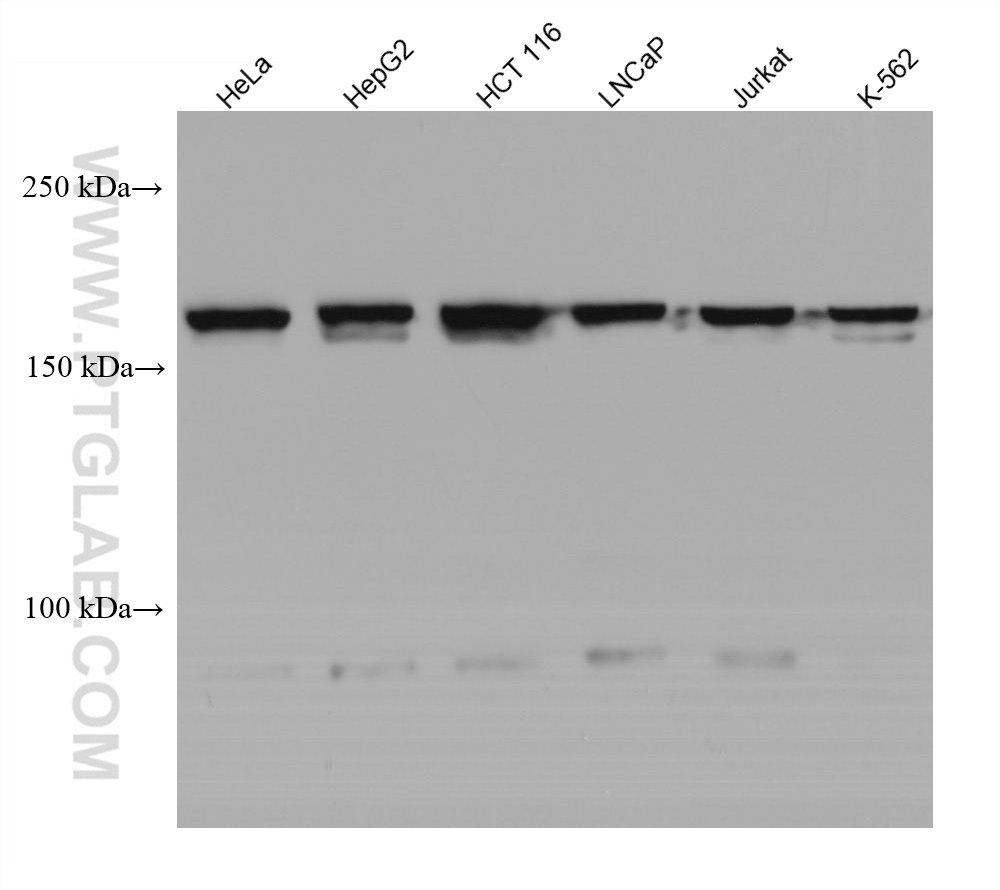验证数据展示
经过测试的应用
| Positive WB detected in | HeLa cells, HepG2 cells, HCT 116 cells, LNCaP cells, Jurkat cells, K-562 cells |
Planning an IF experiment? We recommend our CoraLite® Plus 488 conjugated versions of this antibody.
推荐稀释比
| 应用 | 推荐稀释比 |
|---|---|
| Western Blot (WB) | WB : 1:1000-1:6000 |
| It is recommended that this reagent should be titrated in each testing system to obtain optimal results. | |
| Sample-dependent, Check data in validation data gallery. | |
产品信息
68063-1-Ig targets TBC1D4 in WB, ELISA applications and shows reactivity with Human samples.
| 经测试应用 | WB, ELISA Application Description |
| 经测试反应性 | Human |
| 免疫原 | TBC1D4 fusion protein Ag20341 种属同源性预测 |
| 宿主/亚型 | Mouse / IgG1 |
| 抗体类别 | Monoclonal |
| 产品类型 | Antibody |
| 全称 | TBC1 domain family, member 4 |
| 别名 | Akt substrate of 160 kDa, AS160, DKFZp779C0666, KIAA0603, TBC1 domain family member 4, TBC1 domain family, member 4, TBC1D4 |
| 计算分子量 | 1299 aa, 147 kDa |
| 观测分子量 | 160 kDa |
| GenBank蛋白编号 | BC151239 |
| 基因名称 | TBC1D4 |
| Gene ID (NCBI) | 9882 |
| RRID | AB_2918804 |
| 偶联类型 | Unconjugated |
| 形式 | Liquid |
| 纯化方式 | Protein G purification |
| UNIPROT ID | O60343 |
| 储存缓冲液 | PBS with 0.02% sodium azide and 50% glycerol , pH 7.3 |
| 储存条件 | Store at -20°C. Aliquoting is unnecessary for -20oC storage. |
背景介绍
TBC1D4, also named as AS160, KIAA0603, may act as a GTPase-activating protein for RAB2A, RAB8A, RAB10 and RAB14. Isoform 2 promotes insulin-induced glucose transporter SLC2A4/GLUT4 translocation at the plasma membrane, thus increasing glucose uptake. The antibody recognizes all the isoform of TBC1D4.
实验方案
| Product Specific Protocols | |
|---|---|
| WB protocol for TBC1D4 antibody 68063-1-Ig | Download protocol |
| Standard Protocols | |
|---|---|
| Click here to view our Standard Protocols |
